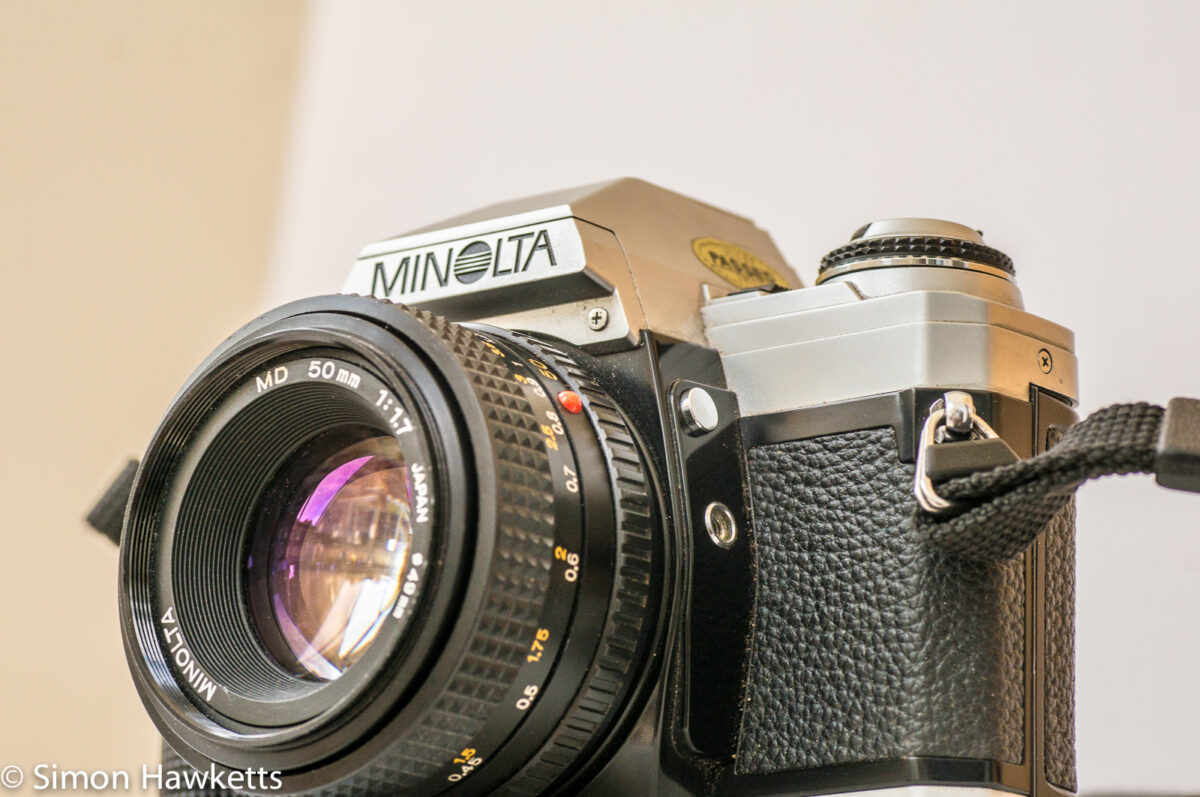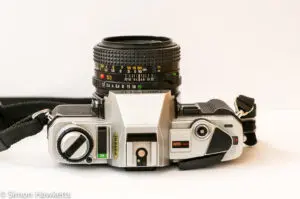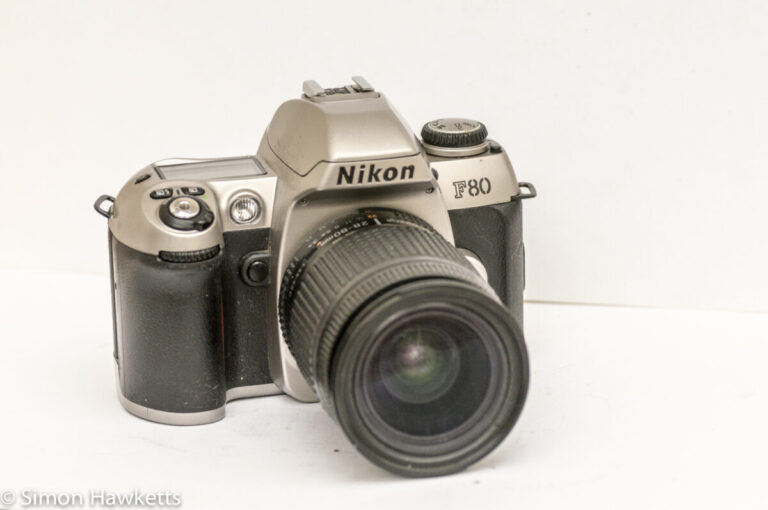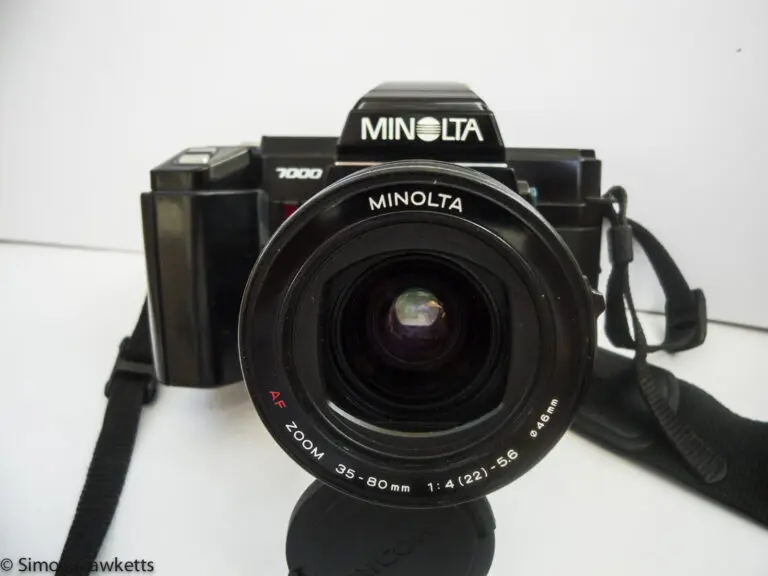Minolta X-300 35 mm SLR
This is my review of another camera in my growing 35 mm camera collection – this time a camera made by Minolta, the Minolta X-300.
It is a manual focus camera from the early 1990s produced by one of the ‘big 5’ camera manufacturers of the time who were Pentax, Nikon, Minolta, Canon and Olympus. It is an entry level camera, but nonetheless it has some nice features.
Minolta X-300 Images
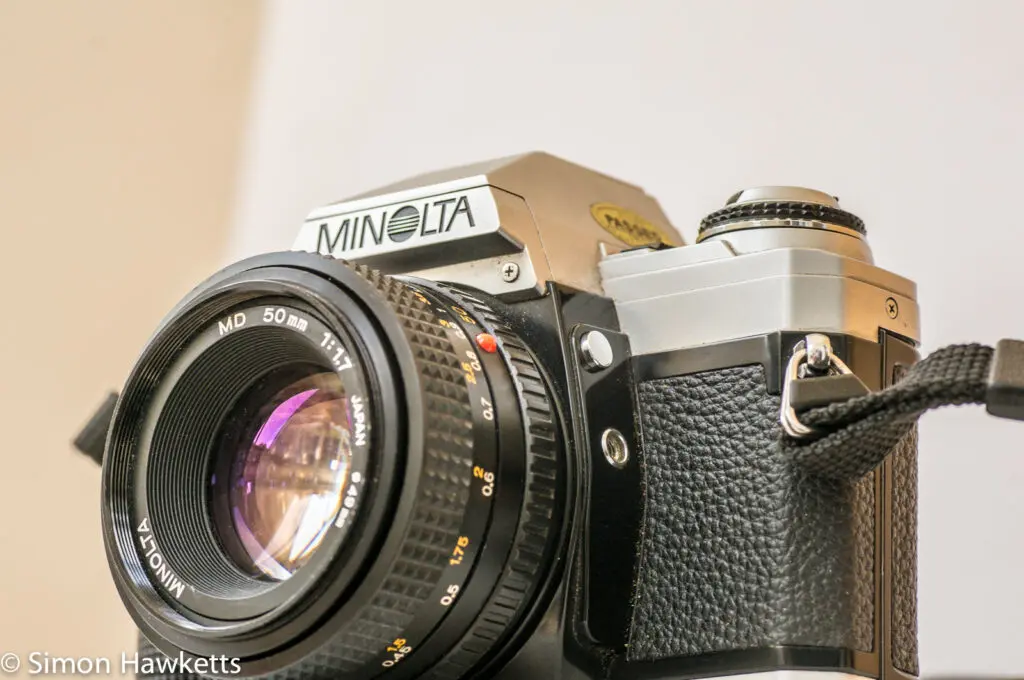
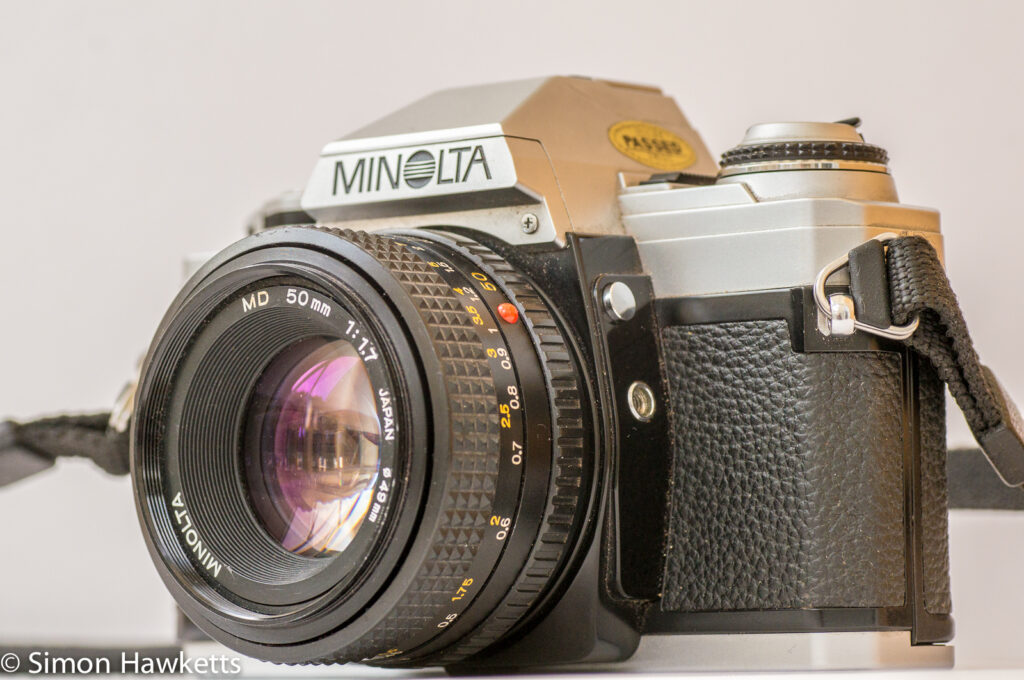
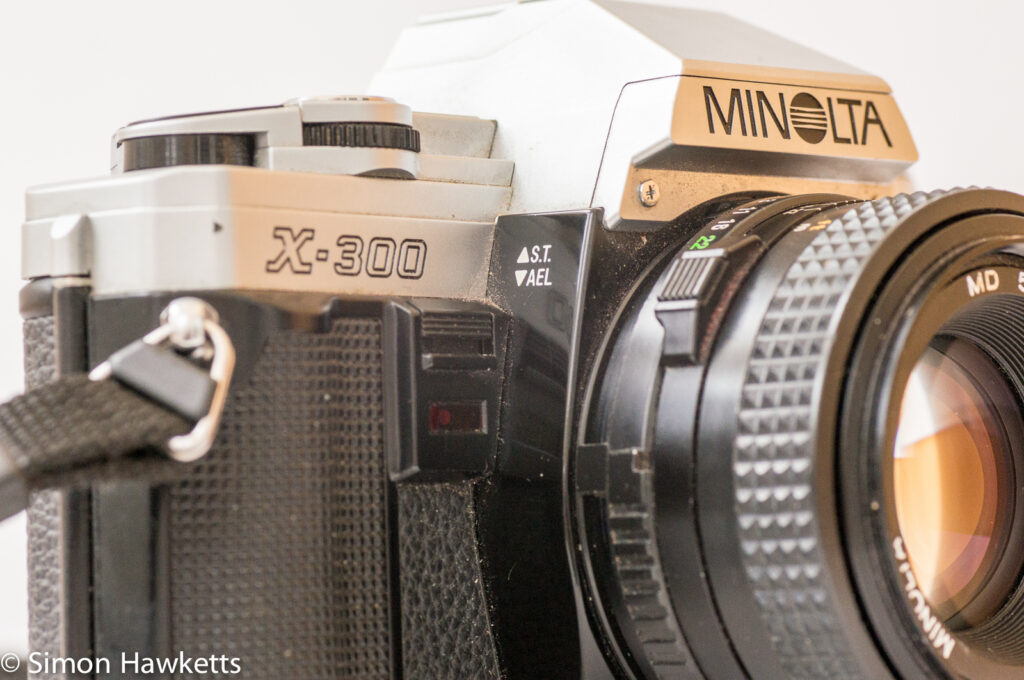
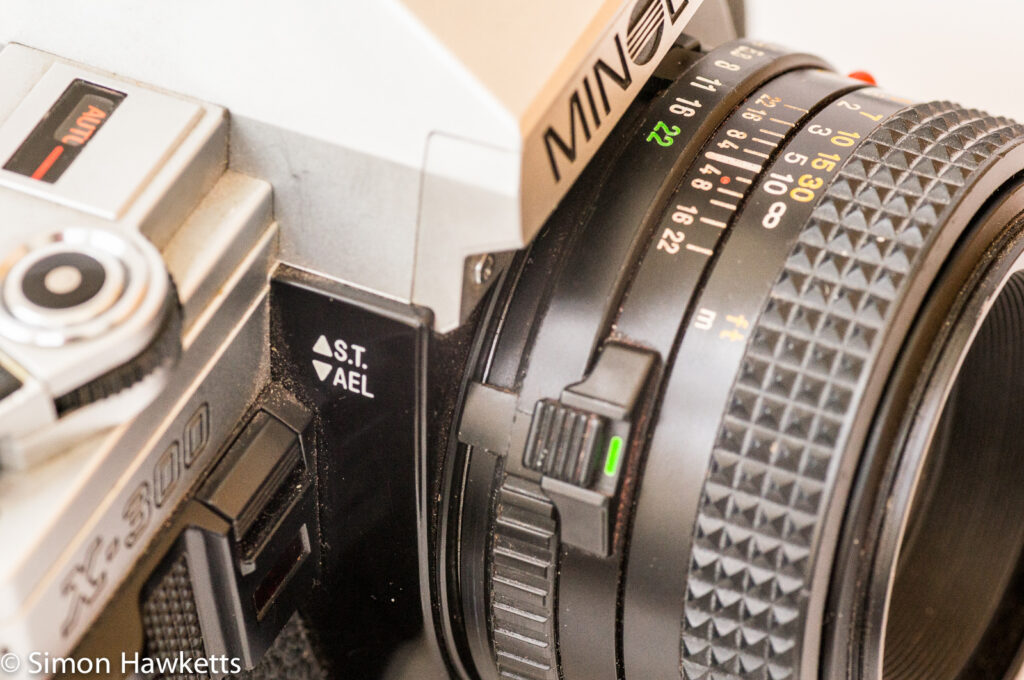
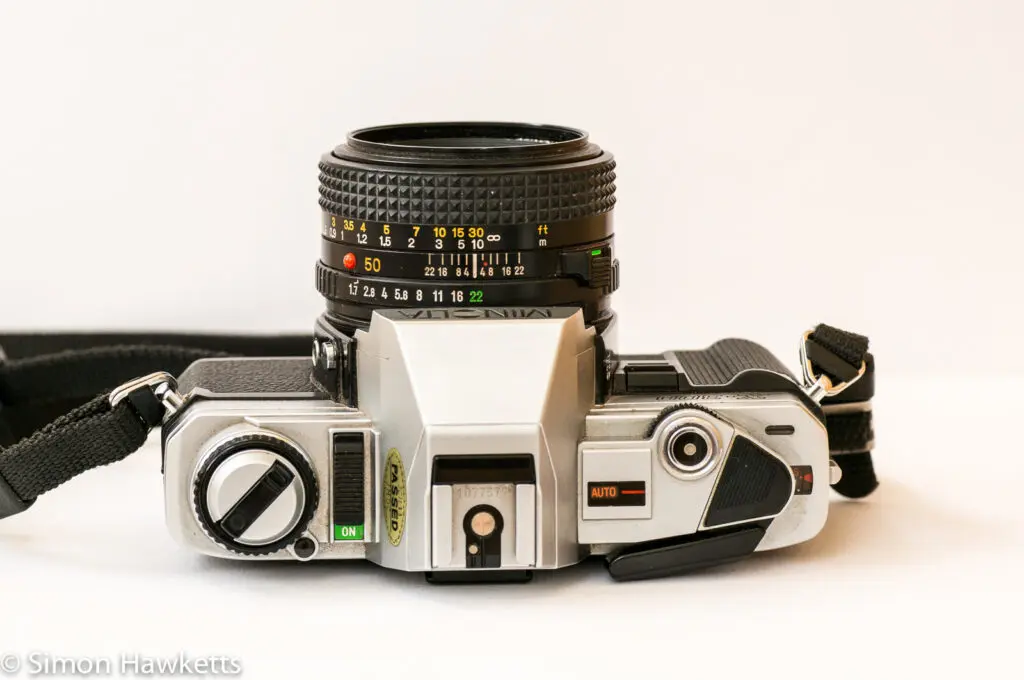
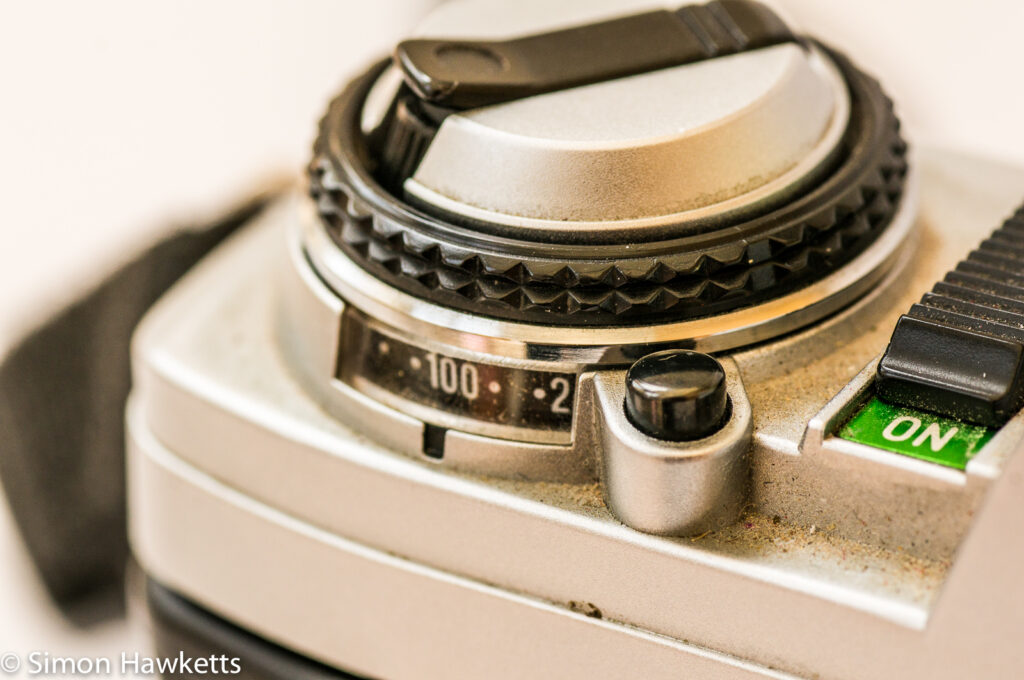

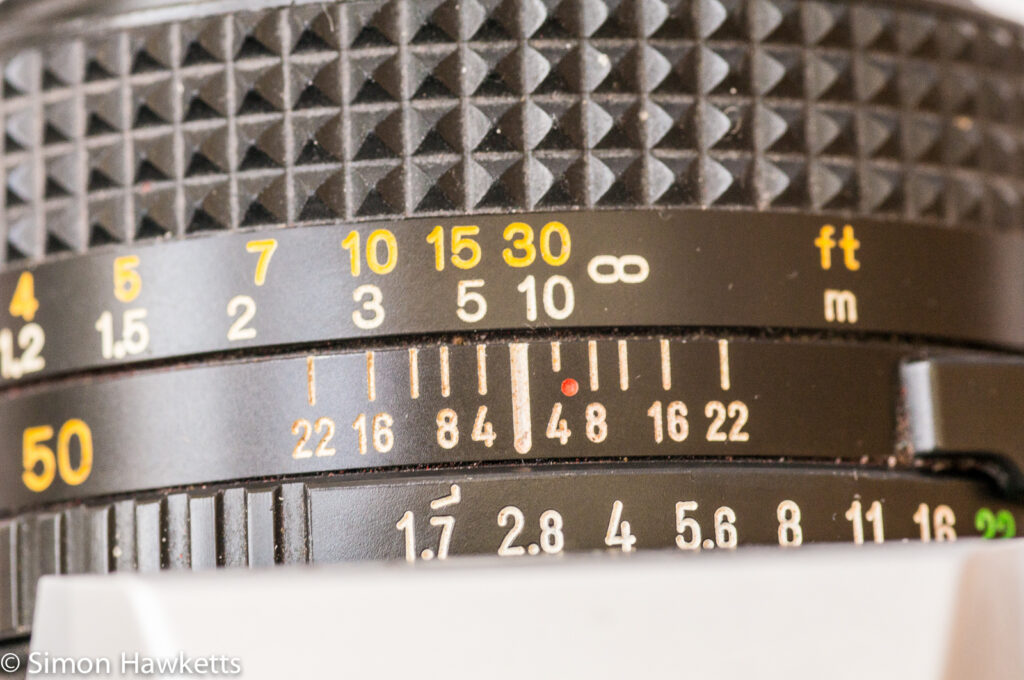
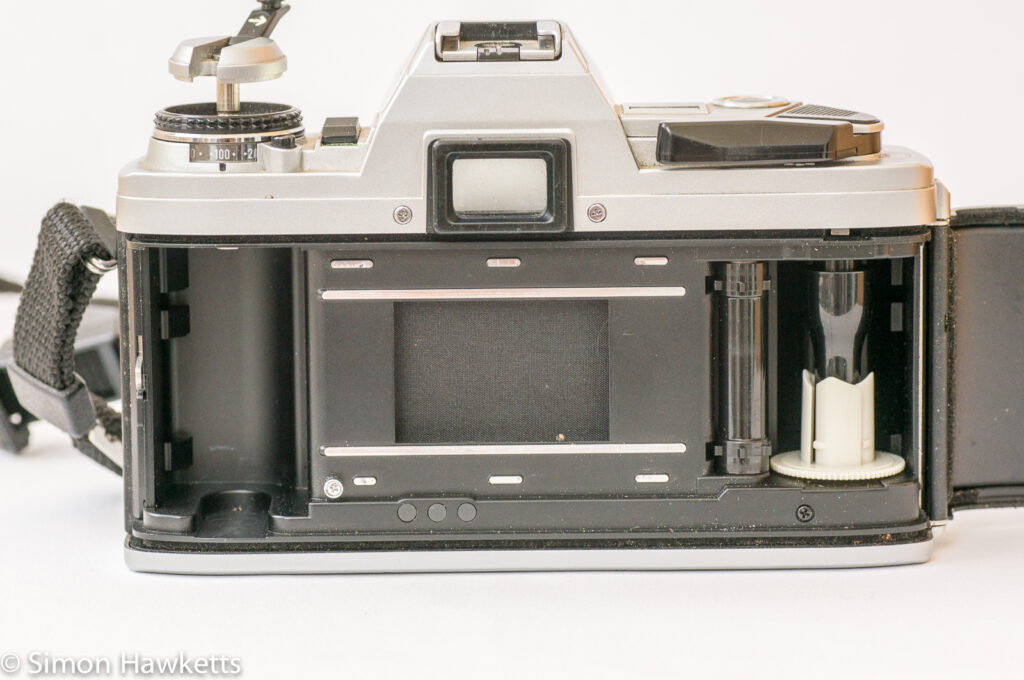
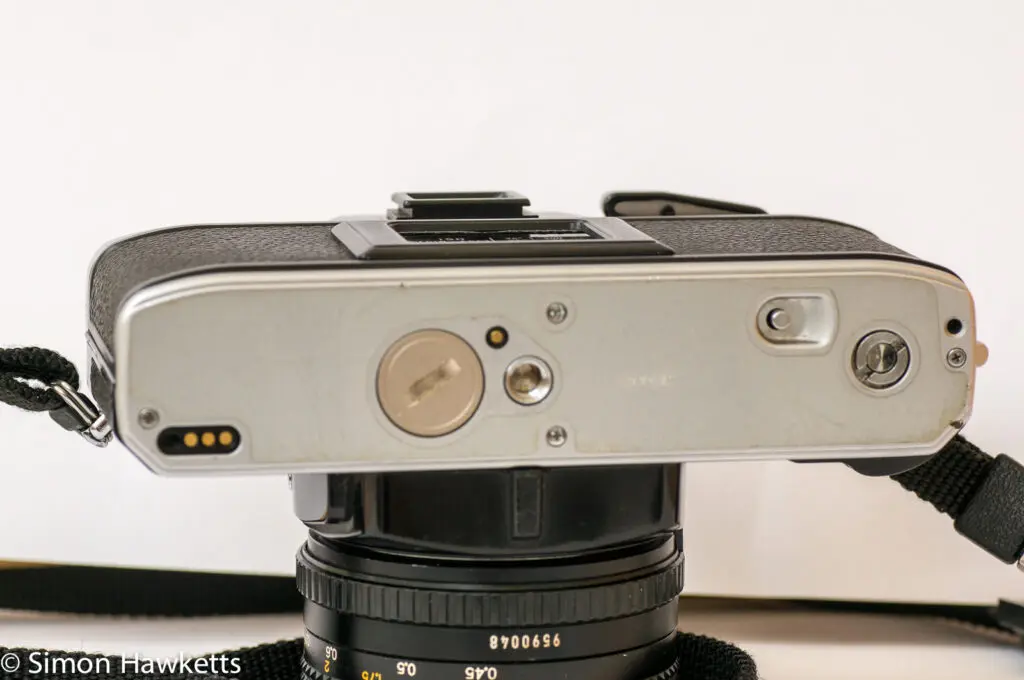

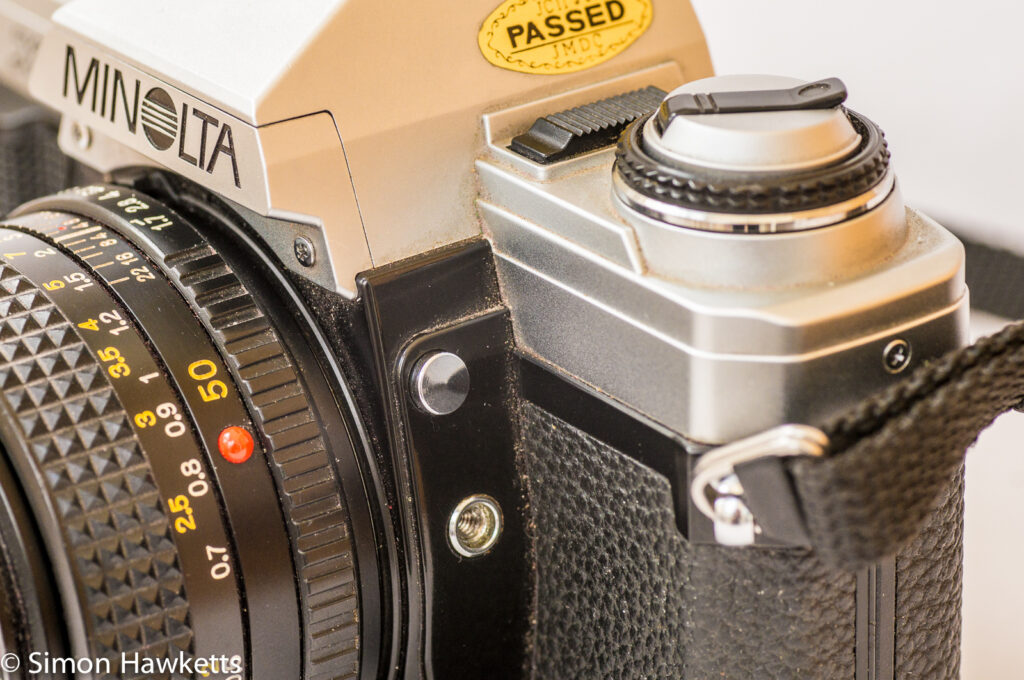
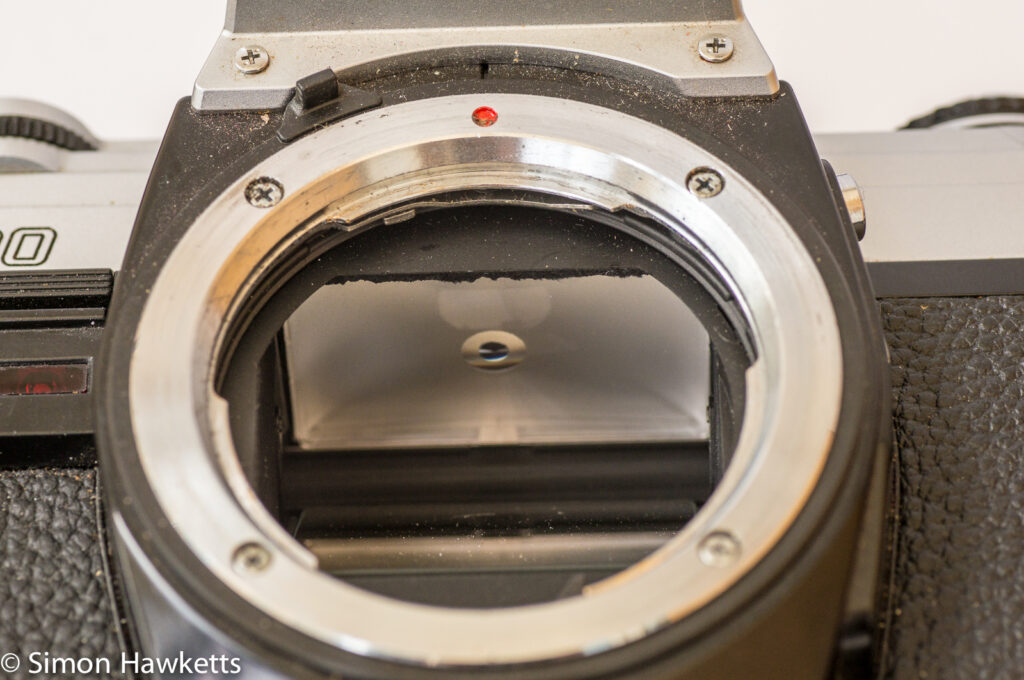
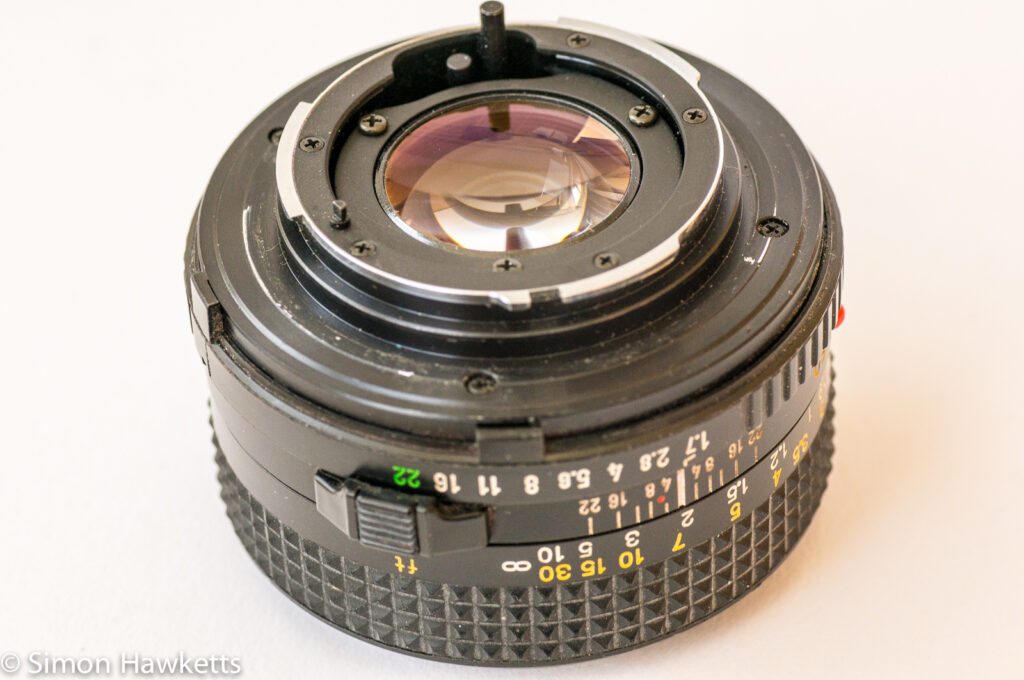

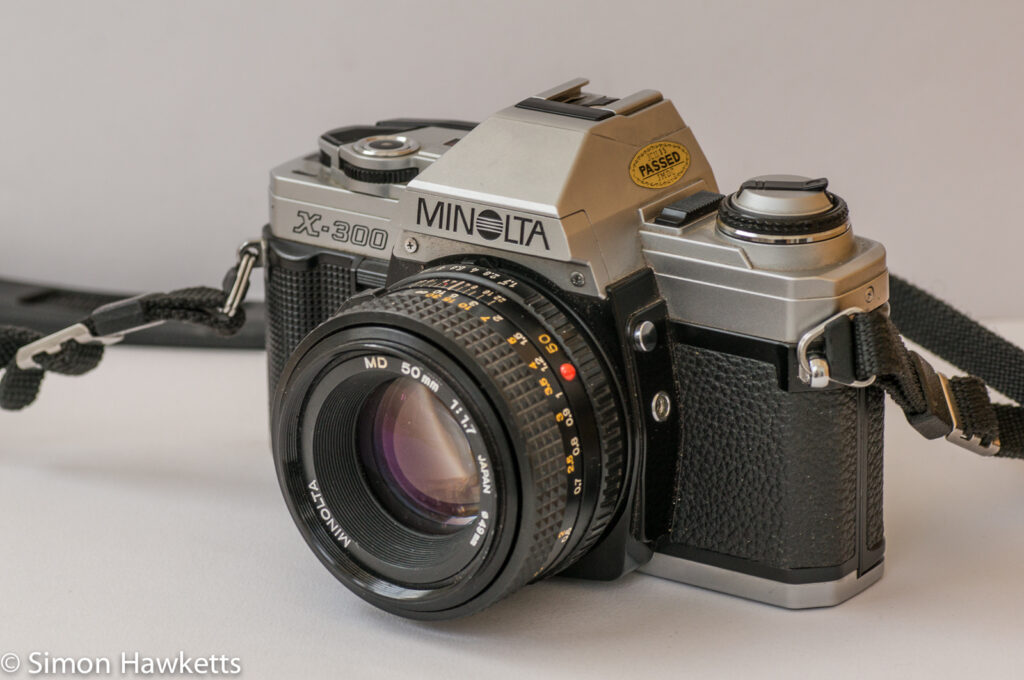
Minolta X-300 Description
In the pictures above the camera looks quite grubby, but this is mostly because the pictures emphasis the dirt – it’s actually not that bad when held in the hand, although I will give it a good clean!
The body of the camera is fairly lightweight and although it looks as if it is constructed of metal, it is actually made of a silvered plastic rather than metal.
It’s quite a minimalist design, with only a main switch, ISO selection dial and rewind lever on one side of the top plate and shutter release, film advance lever and shutter speed dial on the other side.
My experience with Minolta cameras generally has led to my belief that Minolta were very good at design – I found on my Minolta Dynax 5 that all the controls were easy to get to whilst the camera was at your eye, and this camera is the same.
Exposure Modes
The camera has three exposure modes :
- Aperture priority mode – This is entered by turning the shutter speed dial to ‘Auto’ and setting the aperture to the value you want.
- Program mode – To go ‘fully auto’ the shutter speed dial is set to ‘Auto’ and the aperture is set to f/22 and then locked in place with a small lever on the lens
- Manual mode – Set the shutter and aperture to the exposure you want, and you are in manual mode
There is no exposure compensation dial, but there is an exposure lock switch, so it’s possible to use the ‘meter on the area you want, lock the exposure and re-compose’ trick instead.
The exposure information is displayed in the viewfinder as a list of the possible shutter speeds, with an LED illuminated next to the selected speed. When switched to manual mode, these led’s change to show the metered value as a steady LED and the set value as a flashing LED. By adjusting the speed / aperture combination, so the flashing LED matched the solid one, you can set the exposure as close to the metered value as you want.
The metering works over the range of 12 – 3200 in 1/3 stop steps, which covers every film I’ve ever seen, and is powered by two SR44 cells.
Other camera features
Other nice touches on this camera are the touch sensitive shutter button, which turns the exposure system on as soon as your finger makes contact with the button, and the electronic self-timer which, like modern cameras, flashes to let you know it’s started its countdown.
Minolta X-300 Specifications
- 35mm film SLR
- Minolta SR/MD bayonet mount
- ISO range 12 to 3200
- Fully automatic exposure mode
- Aperture priority mode
- Manual mode.
- Touch activated exposure metering
- AEL lock
- Electronic self timer
- Flash hot shoe and sync socket.
- Split-image rangefinder style focusing aid and micro prism in the viewfinder
- Power winder accessory available
- Rapid film advance lever
- Manual available on-line here
Lens/Camera performance
The lens fitted to this camera is a Minolta 50 mm f/1.7 multi-coated unit with a plastic Minolta SR/MD bayonet mount. Although it doesn’t look anything special, I’ve used this lens on my Sony NEX 6 with an adapter, and it’s a pretty solid performer. I’ve included the shots here as well in the gallery below.
Since the lens is a major part in determining the quality of a picture in 35 mm photography (well all photography but with 35 mm photography all cameras could have the same film loaded so the lens and exposure system really defined the camera) these pictures are a useful indication of how well the camera would perform.

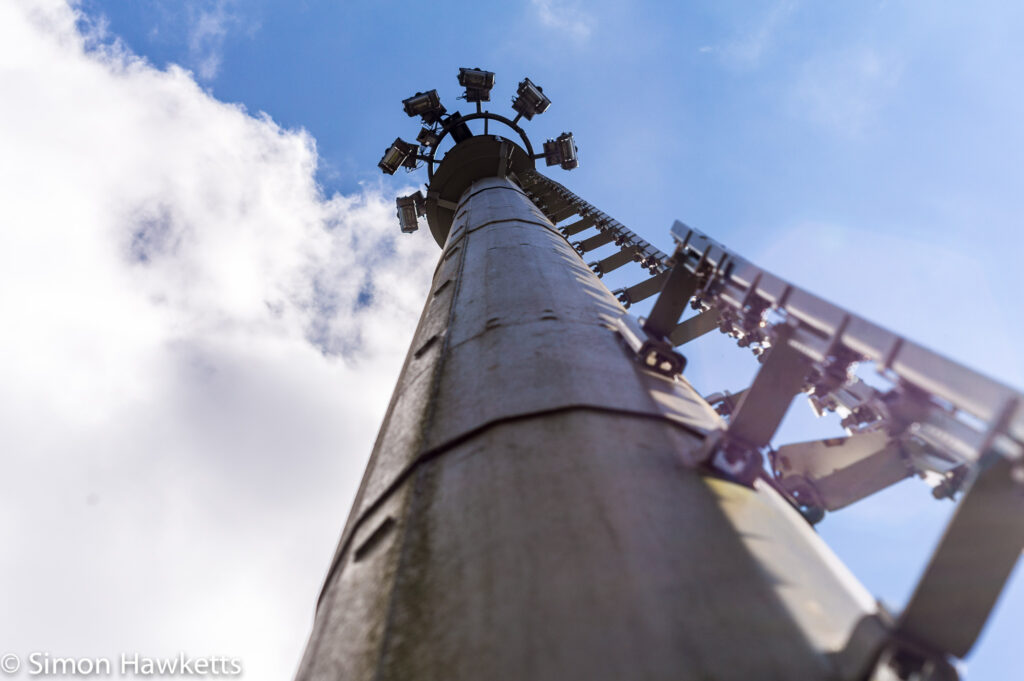











Discover more from Everything Vintage
Subscribe to get the latest posts sent to your email.

